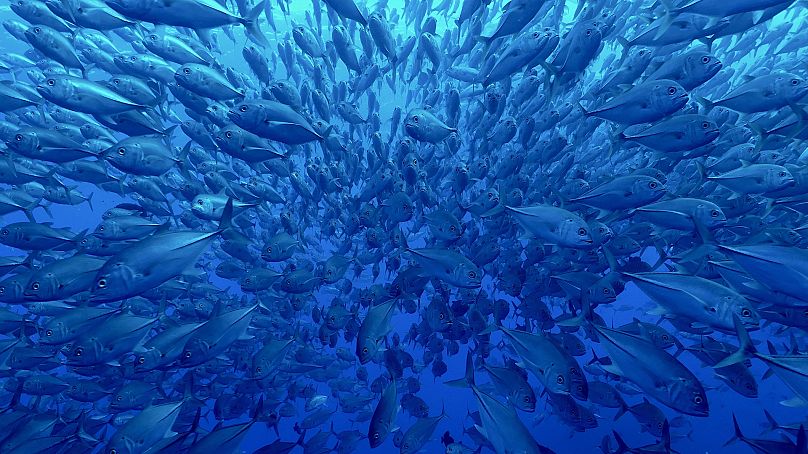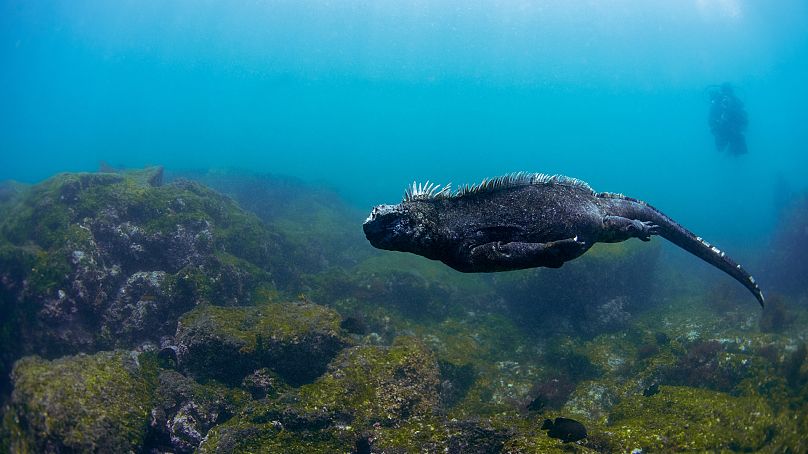Ecuador’s ‘debt for nature’ swap hopes to protect the archipelago’s unique flora and fauna including many species that can be found nowhere else on Earth.
Ecuador has converted $1.6 billion (€1.5 billion) of debt into a loan which will free up millions for conservation in the Galápagos Islands.
The deal, announced on Tuesday 9 May, is the largest of its kind ever made. It is known as a ‘debt for nature’ swap.
“The world’s biggest ocean-friendly debt swap is coming together in Ecuador to protect its unique natural resources,” says Pablo Arosemena Marriott, Minister of Economy and Finance.
“This strategy decreases public debt, boosts fiscal stability, and creates opportunities to address basic needs like healthcare and education.”
Nearly 1,000km off the coast of Ecuador, many of the species seen on the Galápagos Islands - like giant tortoises and marine iguanas - can be found nowhere else on Earth. After visiting the archipelago in 1835, British naturalist Charles Darwin developed his theory of evolution.
What is a ‘debt for nature’ swap?
Typically, debt for nature swaps are arranged to help governments fund conservation. They involve reducing debt alongside commitments to put money towards the protection of nature.
In April, Ecuador converted $1.6 billion (€1.5 billion) of its existing debt, with the help of the Pew Bertarelli Ocean Legacy Project and other partners, into a $656 million (€599 million) loan financed through a bond issued by global investment bank Credit Suisse.
The new loan will be repaid over the next 18 years with the country providing around $17 million (€16 million) a year for conservation. Once the payments from Ecuador finish in 2040, it says assets from stable investment and repayment should be enough to continue funding conservation at the same level in perpetuity.
Deals like this have already proved successful in Belize, the Seychelles and Barbados but Ecuador’s debt for nature swap is the largest ever made. It cuts the country’s debt by more than $1 billion (€913 billion), from which $450 million (€411 million) will be invested in conservation in the Galápagos Islands.
What will the money be spent on?
Ecuador plans to start handing out conservation funding starting in September this year. The money will be used to combat climate change and overfishing which put pressure on the Galápagos ecosystem.
“These funds will promote climate resilience and support the sustainable fishery, thus taking a crucial step toward a financial transition where diplomacy, conservation and finance walk together headed toward the path of general well-being,” says Minister of Foreign Affairs, Gustavo Manrique Miranda.
Monitoring, control and patrolling to safeguard key marine ecosystems in the archipelago will be prioritised. Ecuador says conservation efforts will benefit migrating species like whale sharks, hammerhead sharks and sea turtles.
“The Ecuadorian people have a close bond with the ocean,” adds Manrique Miranda.
“We understand its value and we treasure nature because of what it gives to our people and our economy.”
The deal fulfils a promise made by President Guillermo Lasso in 2021 to ensure that there is always funding to manage the Galápagos Marine Reserve and Hermanded Marine Reserve.
“Thanks to the commitment of the Government of Ecuador, conservation is not a topic related to one ministry only; it becomes a global, coordinated and cooperative action of all of us who live on the blue planet,” says Minister of the Environment, Water and Ecological Transition Jose Antonio Davalos.
He adds that marine preservation and conservation of protected areas will allow future generations the privilege of enjoying this archipelago that is the heritage of the Ecuadorian people and the world.













